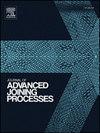Pulsed GMAW-based WAAM–Influence of droplet detachment mode on the geometry and mechanical properties of 308 L stainless steel
IF 3.8
Q2 MATERIALS SCIENCE, MULTIDISCIPLINARY
引用次数: 0
Abstract
This study aimed to introduce pulsed gas metal arc welding (GMAW)-based wire arc additive manufacturing (WAAM) for the deposition of 308 L stainless steel. Then, the influence of the different droplet detachment modes on the geometric characteristics and mechanical properties of the deposited metal were analyzed. The detachment modes of one drop per multiple pulses (ODMP), one drop per pulse (ODPP), and multiple drops per pulse (MDPP) were analyzed. The experiments were performed by depositing preforms using 308 L stainless steel wire with a diameter of 1.0 mm on a 316 L stainless steel substrate. Characterization of the droplet detachment modes was performed using a high-speed camera and data acquisition system. Geometric analysis of the preforms was performed by photogrammetry. A greater heat input was observed in the ODMP mode. The MDPP and ODPP modes produced thinner preforms with a better surface finish. In addition, the MDPP mode generated better results in the manufactured preforms, with lower hardness and higher tensile strength. However, the ODMP mode led to relatively poorer results, with wider walls, greater surface waviness, and lower tensile strength. The results of this research are expected to provide technical and scientific support for the development of additive manufacturing by arc deposition, especially for stainless steel applications.
基于脉冲gmaw的waam -液滴分离方式对308l不锈钢几何和力学性能的影响
本研究旨在介绍基于脉冲气体金属弧焊(GMAW)的丝弧增材制造(WAAM)沉积308 L不锈钢。然后,分析了不同的液滴剥离方式对沉积金属几何特征和力学性能的影响。分析了多脉冲一滴(ODMP)、多脉冲一滴(ODPP)和多脉冲多滴(MDPP)的剥离模式。实验采用直径为1.0 mm的308 L不锈钢丝在316l不锈钢基体上沉积预制体。利用高速摄像机和数据采集系统对液滴分离模式进行了表征。用摄影测量法对预成形件进行几何分析。在ODMP模式下观察到更大的热输入。MDPP和ODPP模式生产的预制体更薄,表面光洁度更好。此外,MDPP模式制造的预制件具有较低的硬度和较高的抗拉强度,效果较好。然而,ODMP模式导致的结果相对较差,壁更宽,表面波浪度更大,抗拉强度更低。该研究结果有望为电弧沉积增材制造的发展,特别是不锈钢的应用提供技术和科学支持。
本文章由计算机程序翻译,如有差异,请以英文原文为准。
求助全文
约1分钟内获得全文
求助全文

 求助内容:
求助内容: 应助结果提醒方式:
应助结果提醒方式:


